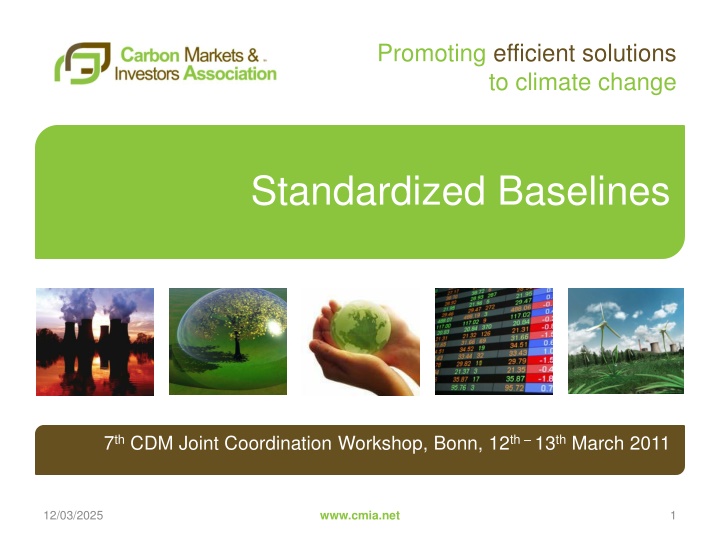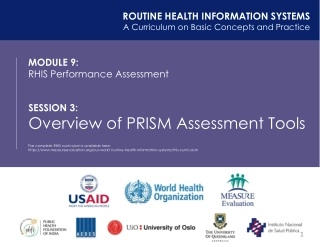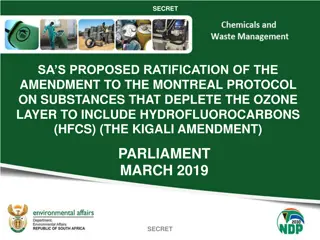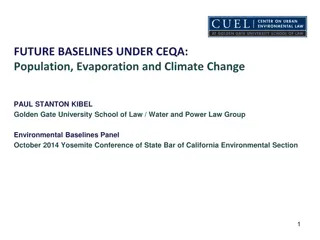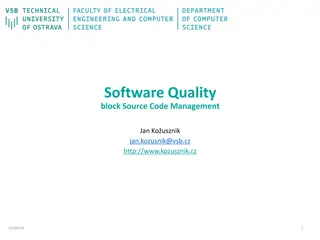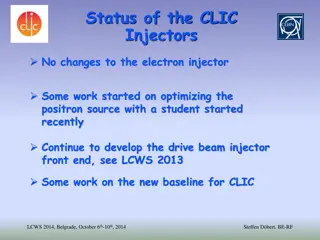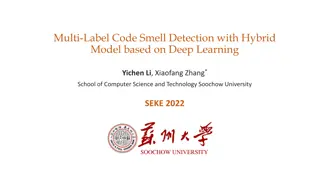Standardized Baselines
Promoting efficient solutions to climate change through standardized baselines is crucial for reducing emissions and improving environmental integrity. This includes setting benchmarks, analyzing barriers, and enhancing mitigation actions in the long term. Explore key terms and objectives presented by CMIA, an international association advocating for climate finance.
Uploaded on Mar 12, 2025 | 0 Views
Download Presentation

Please find below an Image/Link to download the presentation.
The content on the website is provided AS IS for your information and personal use only. It may not be sold, licensed, or shared on other websites without obtaining consent from the author.If you encounter any issues during the download, it is possible that the publisher has removed the file from their server.
You are allowed to download the files provided on this website for personal or commercial use, subject to the condition that they are used lawfully. All files are the property of their respective owners.
The content on the website is provided AS IS for your information and personal use only. It may not be sold, licensed, or shared on other websites without obtaining consent from the author.
E N D
Presentation Transcript
Promoting efficient solutions to climate change Standardized Baselines 7thCDM Joint Coordination Workshop, Bonn, 12th 13thMarch 2011 12/03/2025 1 www.cmia.net
Who we are CMIA is an international trade association representing firms that finance, invest in, and provide enabling support to activities that reduce emissions. Our international membership accounts for an estimated 75% of the global carbon market, valued at USD 130 billion in 2009. Our effectiveness and credibility as a voice in the policy-making arena is founded on our unique profile - an international, emitter-free association, representing the entire value chain of climate finance. This results in a unique advocacy platform with emphasis on the environmental integrity of market mechanisms and climate change policies. 12/03/2025 2 www.cmia.net
Summary Objectives of standardized baselines Basic concepts of: Baseline and additionality Benchmarks Emission factors Realistic short term / long term expectations for the scope of standardized baselines 12/03/2025 3 www.cmia.net
Objectives of Standardized Baselines Swiss submission to SBSTA Reduce / remove transaction barriers Increase efficiency and simplify procedures Scale up mitigation actions Increase regional distribution EU submission Streamlining and simplifying the CDM CMIA sees an important distinction between what can be achieved immediately / in the short term and what can be achieved over the longer term through systemic changes in the CDM 12/03/2025 4 www.cmia.net
Key terms Baseline anthropogenic emissions that would occur in the absence of the project activity. The concept of additionality is fundamentally linked to the definition of a baseline to show that the baseline is not BAU. A baseline can be defined for a single technology, but it is not easy to define a baseline for multiple technologies because (a) the technologies may interact and (b) it is difficult to implement to the original project design (which means financial additionality needs to be re-assessed). Barrier analysis is more robust 12/03/2025 5 www.cmia.net
Key terms A Benchmark is a performance standard, expressed in t CO2 per unit of activity / output. In order to motivate action it must be set below existing performance (i.e. act to improve performance). There is no additionality test required for a benchmark because in achieving the benchmark, the facility is meeting a target and in exceeding the benchmark, the facility is acting beyond BAU. A benchmark does not restrict activity to a single technology A benchmark requires data from peers plants of similar scale / technology / social / environmental setting A benchmark incorporates an element of domestic action lowering existing performance to the benchmark and additional performance beneath the benchmark 12/03/2025 www.cmia.net 6
Key terms An Emission Factor is also expressed in t CO2 per unit of activity / output but this is not set as a target; it is a measure of existing performance and is used as a key input in determining baseline or project emissions A Default Factor is a value to be used in absence of something better 12/03/2025 7 www.cmia.net
Implications for the CDM Benchmarks in the short term will NOT fulfil all of the objectives of standardization Defining and managing a benchmark is difficult; requires data and institutional infrastructure which typically exists in advanced developing counties Thus benchmarks are likely to enhance CDM in China and other advanced DCs, whilst creating further barriers to CDM in LDCs, SIDS and under represented sectors in DCs 12/03/2025 8 www.cmia.net
Implications for the CDM Benchmarks will not simplify / streamline or speed up the process: Methodologies / rules and guidance will be required Agreeing a benchmark will not be straightforward (national / regional / provincial; leakage; uncertainty; level of ambition; verification) Procedures for validation and verification verifying total CO2 emissions and total output without an additionality test (more similar to EU ETS verification) new PDD; new DOE skills / new accreditation requirements; new meths; new VVM; treatment of uncertainty 12/03/2025 9 www.cmia.net
Implications for the CDM Benchmarks will scale up CDM but likely in the same sectors (e.g. renewable energy because of the relative simplicity of defining the benchmark) If the intention of standardizing baselines is to simplify the process, make it more efficient, expand into under- represented sectors and countries . a benchmark approach is not the short term answer 12/03/2025 10 www.cmia.net
What should a standardized baseline look like? A standardized baseline which achieves these objectives is comprised of 3 elements: A qualified description of the baseline e.g. Section B4 of PDD would read According to the standardized baseline and as accepted by the EB and host country DNA, the baseline for energy use for cooking within the project boundary is the use of unsustainably sourced biomass. Conservatively quantified baseline emissions associated with the existing technology e.g. Section B6 of the PDD would read According to the standardized baseline and the study approved by the EB and the host country DNA, the baseline emissions amount to [3] tonnes of CO2 per household per year. A positive list of technologies / project activities which are considered additional e.g. Section B5 of the PDD would read According to the list of positive technologies approved by the CDM EB and the host country DNA, the supply of biomass fired cooking stoves and biomass briquettes within the project boundary is considered additional. 12/03/2025 11 www.cmia.net
What should a standardized baseline look like? These 3 components may be proposed by the EB and accepted partially or in full by host country DNAs Simplifying sections B4, B5 and B6 of the PDD would significantly reduce the transaction burden 12/03/2025 12 www.cmia.net
What sectors/technologies? Examples of sectors / technologies that would be suitable for partial or complete standardization include: Household consumption of unsustainable biomass / charcoal / fossil fuel for cooking, heating, lighting Off-grid renewable energy (of any capacity); possibly on- grid renewable energy? Biodiesel Industrial fuel switching from fossil fuels to biomass Methane capture 12/03/2025 13 www.cmia.net
What sectors/technologies? Energy Efficient appliances (CFLs, coolers, street lighting, VFD etc) should be addressed via deemed savings approach, but not just limited to small scale CDM Energy efficiency programs (i.e. multiple technology applications) rely on benchmarks and are not practical under CDM in its current form Procedures for the application of benchmarks need to be developed over a period of several years Standardized baselines as described above could be implemented relatively quickly and would achieve almost all objectives simplify, speed up, re-distribute . They would lead to scale up after some time 12/03/2025 14 www.cmia.net
Chinas success in the CDM China is so successful in the CDM because the have effectively standardized the CDM already The investment benchmarks set by Govt authorities, combined with the institution of the Feasibility Study Report, is effectively a positive list it is a proven means of demonstrating additionality. Proving financial additionality in other countries is hampered by the need to determine an investment threshold (Weighted Average Cost of Capital / WACC) / or by conservative WACC set in the methodology. The publication of the data required to determine the grid emission factor effectively quantifies the baseline for most projects (other baselines are measured such as methane emissions, industrial gases, waste heat etc) Accessing and verifying despatch data or power plant data is not easy in many countries 12/03/2025 15 www.cmia.net
Conclusion Standardized baselines have the capacity to: Make CDM successful (faster, simpler, more transparent, cheaper) In many more countries - particularly in LDCs and SIDS And under-represented sectors households / rural / village / urban / municipal In the short term With scale up over time 12/03/2025 16 www.cmia.net
Conclusion THANK YOU! 12/03/2025 17 www.cmia.net
